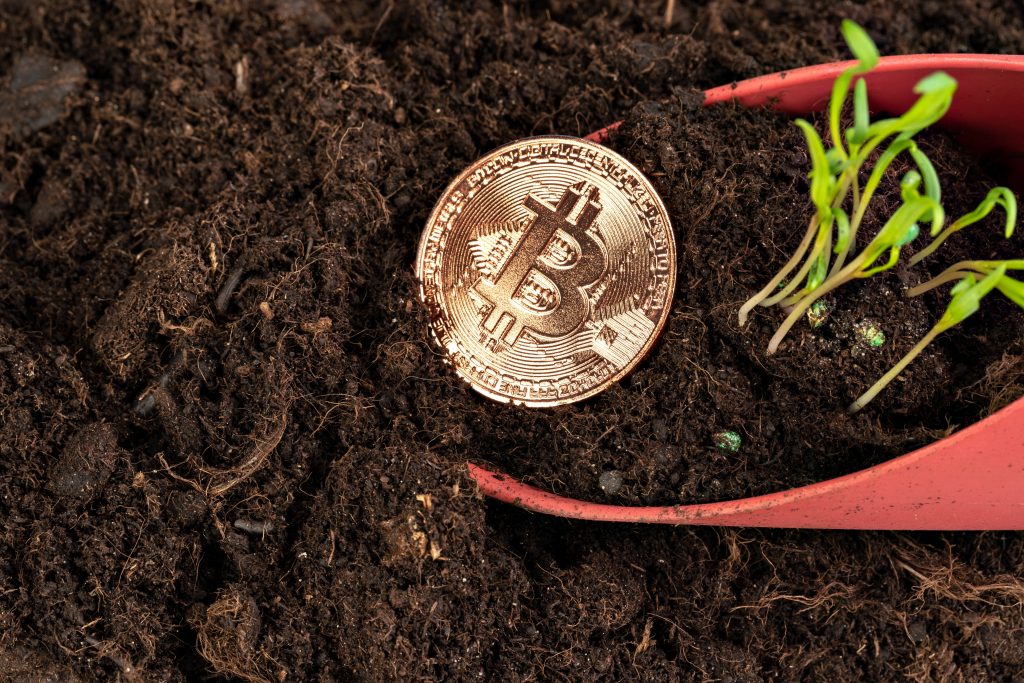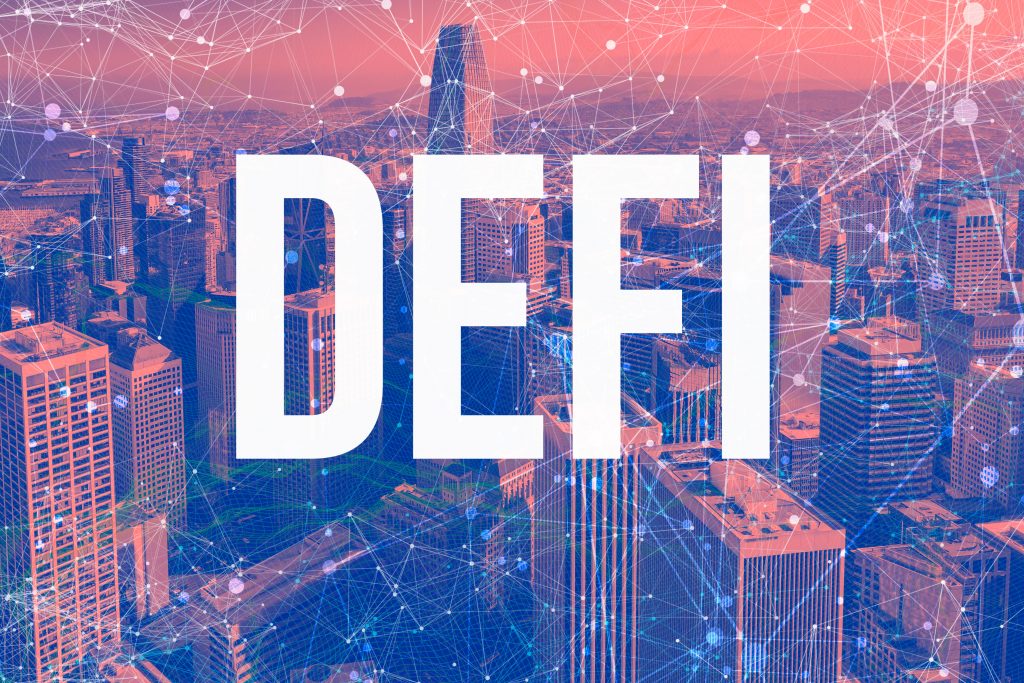
Yield Farming 101: Guide To Earning Passive Income With Cryptocurrency
Are you interested in earning passive income with cryptocurrency? If so, you may have come across the term “yield farming.” But what exactly is yield farming, and how can you get started? In this guide, we will explore the basics of yield farming and how it can help you generate passive income in the world of cryptocurrency.
Cryptocurrency has taken the financial world by storm, offering new and innovative ways to invest and earn money. One such method is yield farming, which has gained popularity among crypto enthusiasts. However, for those new to the concept, it can be overwhelming and confusing. This guide aims to simplify the process and provide a comprehensive introduction to yield farming.
Yield farming allows cryptocurrency holders to earn passive income by lending or staking their assets in decentralized finance (DeFi) protocols. With the potential for high returns, it has become an attractive option for those looking to grow their crypto holdings. In this guide, we will break down the key concepts of yield farming, explore different strategies, and provide tips on how to maximize your earnings. Whether you’re a beginner or an experienced crypto investor, this guide will equip you with the knowledge to start earning passive income through yield farming.
Types of Yield Farming
Yield farming has become a popular way to earn passive income in the cryptocurrency space. By providing liquidity to decentralized finance (DeFi) platforms, users can earn various kinds of rewards.
Liquidity Mining
Liquidity mining in DeFi yield farming involves using existing assets to provide liquidity to decentralized exchanges through liquidity pools. Participants earn cryptocurrencies by depositing their assets into these pools and earning yield farming rewards in return. The liquidity pools facilitate trading on decentralized exchanges, and participants earn a portion of the trading fees generated from the pool.
Yield farming rewards are the incentives offered to liquidity providers for adding funds to these pools. While the potential annual percentage yield (APY) can be quite high, reaching double or even triple-digit percentages, there are risks involved, such as impermanent loss and smart contract vulnerabilities. Benefits include passive income generation and the potential for higher returns compared to traditional investment options.

Lending Protocols
There are several lending protocols available for crypto lending, each with its unique features and benefits. Popular lending protocols include Compound, Aave, and MakerDAO.
Compound allows users to lend and borrow various cryptocurrencies with no need for a traditional credit check. Investors can participate by depositing their crypto assets into the protocol and earning interest on their holdings. Aave also allows for lending and borrowing of crypto assets, with the added benefit of being able to choose between fixed or variable interest rates. MakerDAO, on the other hand, enables users to borrow DAI, a stablecoin pegged to the US dollar, by locking up their crypto assets as collateral.
These protocols manage the lending process through smart contracts and algorithmic interest rates based on supply and demand. Risks associated with using these protocols include the potential for smart contract bugs and market volatility, while rewards include the ability to earn interest on deposited crypto assets. Overall, users should carefully consider the risks and benefits before participating in crypto lending through these protocols.
Staking Rewards
Staking rewards can be earned by participating in proof-of-stake networks or by depositing funds into a liquidity pool in DeFi. To stake tokens, one must lock up a certain amount of cryptocurrency in a wallet or smart contract, which helps to secure the network and validate transactions. In return for staking, participants receive rewards in the form of additional tokens. This process allows stakers to earn passive income while contributing to the security and functionality of the network.
There are different methods of staking, such as solo staking, delegated staking, and liquidity pool staking, each with its own set of requirements and potential rewards. In proof-of-stake systems, validators play a crucial role in securing the network by validating transactions and creating new blocks. Validators are rewarded with new block rewards for their participation in the network’s consensus process.
By staking and participating in proof-of-stake networks or DeFi liquidity pools, individuals can earn staking rewards, contribute to network security, and potentially benefit from the growth of the underlying cryptocurrency ecosystem.
Yield Aggregator Platforms
Some top yield aggregator platforms available for investors include Yearn Finance, Harvest Finance, and Rari Capital. These platforms use smart contracts to automate and optimize returns across yield farming and DeFi strategies. Smart contracts are utilized to automatically invest and reallocate funds based on the most profitable yield farming opportunities, reducing the need for manual intervention.
These platforms pool funds from various liquidity providers and invest them into a portfolio of yield-bearing methods, such as lending, staking, and liquidity provision. By leveraging smart contracts, they can continuously monitor and adjust the investment strategy to maximize returns for users.
The potential benefits of using a yield aggregator include the ability to access a diverse range of DeFi strategies, automation of investment decisions, and potential for higher yields compared to traditional banking products. However, drawbacks may include potential smart contract vulnerabilities, liquidity risks, and the complexity of understanding and navigating the DeFi space.
Overall, yield aggregators offer a convenient way for investors to participate in yield farming and DeFi without the need for constant monitoring and management.
What You Need to Start Yield Farming
If you’re interested in getting started with yield farming, there are a few key things you’ll need to have in place before you can begin. From understanding the basics of decentralized finance (DeFi) to acquiring the necessary digital assets and setting up a digital wallet, these foundational steps are essential for anyone looking to enter the world of yield farming.

Crypto Wallet & Exchange Account
Creating a crypto wallet and exchange account involves several steps to ensure security and a smooth experience.
1. Research and select a reputable platform: Start by researching and selecting a platform with a strong reputation for security and user-friendly interface. Look for platforms with good reviews and a history of securely handling cryptocurrency.
2. Set up a secure wallet: After selecting a platform, create a secure crypto wallet to store your digital assets. Choose a wallet with strong security measures such as two-factor authentication and encryption.
3. Complete the account verification process: Once the wallet is set up, proceed to create an exchange account on the chosen platform. Complete the account verification process to secure your account and comply with regulatory requirements.
Choosing a platform with strong security measures is crucial to protect your digital assets from potential threats such as hacking or fraud. A user-friendly interface is also important for a smooth and convenient experience while managing your crypto wallet and exchange account. By selecting a reputable platform with these features, you can ensure the security of your assets and have a positive experience in managing your cryptocurrency investments.
Knowledge and Experience with Crypto Assets
I have a strong knowledge and experience in crypto assets, including trading and investing in various cryptocurrencies. I have also been involved in crypto affiliate programs, promoting products and services related to cryptocurrencies. Additionally, I have experience in crypto lending, earning interest by lending out my cryptocurrency.
My skills and expertise in promoting cryptocurrency-related products and services include creating engaging content, utilizing social media marketing, and maintaining a strong understanding of the crypto market trends. I have successfully promoted crypto wallets, exchanges, and other related products through various online channels.
In terms of crypto lending, I have gained experience in evaluating lending platforms, managing the risks involved, and maximizing returns through strategic lending decisions. I have also developed a deep understanding of the lending process and have actively participated in lending out my crypto assets to earn interest.
Overall, my experience and skills in the crypto space have allowed me to effectively navigate the industry, promote crypto-related products, and earn passive income through lending activities.
Risk Tolerance Levels
Risk tolerance refers to an individual’s willingness to take on risk in their investment portfolio. Conservative investors tend to prioritize capital preservation and are less willing to accept market volatility, while aggressive investors are comfortable with higher levels of risk and potential for higher returns. Moderate investors fall in between these two extremes, seeking a balance between risk and return.
Several factors can influence an individual’s risk tolerance, including their financial goals, time horizon, and personal comfort level with market volatility. For example, someone with a longer time horizon and a goal of maximizing wealth accumulation may be more willing to take on higher levels of risk. Conversely, someone with a shorter time horizon and a goal of capital preservation may have a lower risk tolerance.
Ultimately, understanding one’s risk tolerance is crucial for building an investment portfolio that aligns with their financial objectives and comfort level with market fluctuations. By considering factors such as financial goals, time horizon, and personal comfort level with risk, individuals can determine their ideal risk tolerance level and create a well-balanced investment strategy.
Liquidity Pools and Providers
Liquidity providers can deposit two different cryptocurrencies into a decentralized exchange (DEX) to provide liquidity. This means their funds are used to facilitate trades, and in exchange, they receive a share of the transaction fees. This is beneficial for the DEX as it ensures there are enough assets available for trading, and for the liquidity providers who can earn a passive income from their deposited funds.
Liquidity mining, on the other hand, is a process where yield farmers receive interest and a new token as a reward for participating in providing liquidity to a DEX. This encourages more users to become liquidity providers and helps to maintain a healthy level of liquidity in the exchange.
Liquidity pools are the funds supplied by liquidity providers, and they are used to facilitate trading on the DEX. By contributing to liquidity pools, providers help to ensure that trades can be executed efficiently, and they also earn rewards in the form of transaction fees. This system of liquidity pools and providers is essential for the decentralized exchange ecosystem, as it ensures that there are enough assets available for trading and incentivizes users to participate in providing liquidity.
Strategies for Successful Yield Farming
Yield farming has become a popular way for cryptocurrency investors to earn passive income through various decentralized finance (DeFi) protocols. However, successful yield farming requires careful planning and strategic decision-making.

Diversify Your Portfolio Across Different DeFi Platforms & Tokens
Diversifying your portfolio across different DeFi platforms and tokens can help spread out the risk and increase the potential for earning passive income in the decentralized finance space. Some popular DeFi platforms to consider for diversification include Uniswap, Compound, Aave, MakerDAO, and SushiSwap. Each of these platforms offers different services such as decentralized exchanges, lending and borrowing, and yield farming.
When researching tokens associated with these platforms, consider their potential for passive income through staking, liquidity providing, and governance participation. For example, tokens like UNI (Uniswap), COMP (Compound), AAVE (Aave), MKR (MakerDAO), and SUSHI (SushiSwap) are associated with these platforms and have different utility and potential for earning passive income.
By diversifying your portfolio across these different DeFi platforms and tokens, you can reduce the impact of any single platform’s performance on your overall investment. It’s important to conduct thorough research and understand the various services and products offered by each platform, as well as the potential risks and rewards associated with the tokens. Diversification is key to building a resilient and potentially lucrative DeFi portfolio.
Do Your Due Diligence Before Participating in Yield Farming
Yield farming has become a popular way to earn passive income in the cryptocurrency space, but it comes with complexities and risks that require careful consideration. Before participating in yield farming, it is crucial to conduct due diligence to understand the potential risks and rewards involved.
The potential rewards of yield farming can be substantial, with the opportunity to earn high yields on cryptocurrency holdings. However, the risks are equally significant, including impermanent loss, smart contract vulnerabilities, and market volatility. It is essential to have experience in the Ethereum network and associated functionalities to navigate the complexities of yield farming effectively.
When researching yield farming platforms, key factors to consider include the yield percentages offered, the security and reliability of the platform, the liquidity pools available, and user instructions for participating in the farming process. By thoroughly researching and understanding these factors, investors can make informed decisions and mitigate potential risks.
Stay Up-to-Date on Market Conditions & DeFi Protocols
In today’s constantly evolving market, staying up-to-date with the latest DeFi protocols and market conditions is crucial for investors. DeFi protocols such as Aave, Compound, and MakerDAO are offering opportunities for earning passive income through lending and borrowing. These protocols utilize smart contracts and blockchain technology to facilitate peer-to-peer lending without the need for intermediaries.
Investors can earn passive income by providing liquidity to these protocols and earning interest on their deposits, but it’s important to be well-informed about the associated risks and benefits. Market conditions play a significant role in determining the success of DeFi lending, so staying informed about factors such as interest rates, liquidity, and market sentiment is essential for making informed investment decisions.
By staying updated on the latest developments in DeFi protocols and market trends, investors can make well-informed decisions and take advantage of the opportunities presented by DeFi lending.
Be Wary of High Risk, High Reward Strategies
High interest reward strategies in cryptocurrency come with their fair share of inherent risks. One potential risk is the possibility of bankruptcy, especially when investing large amounts of cryptocurrency in these high risk ventures. Additionally, the high investment requirements associated with these strategies can also pose a significant financial risk.
It is crucial to conduct thorough research on cryptocurrency platforms before depositing large amounts of crypto. This includes understanding the security measures in place, the track record of the platform, and the transparency of their operations. Without conducting proper due diligence, investors are exposed to the risk of falling victim to fraudulent schemes or unscrupulous platforms.
When pursuing high risk, high reward strategies in the cryptocurrency market, caution is paramount. It is important to carefully weigh the potential trade-offs and consider the possibility of financial loss. While the allure of high returns can be enticing, it is essential to approach such ventures with a realistic mindset and a clear understanding of the associated risks. In the volatile world of cryptocurrency, the promise of high rewards often comes with equally high risks.

Conclusion
In conclusion, yield farming is definitely a lucrative avenue for earning passive income with cryptocurrency. The process involves a lot of risk, however, and it requires a certain level of technical knowledge in order to be successful. Yield farmers must understand the different types of tokens and strategies that are available in order to maximize their returns. Ultimately, if done properly, yield farming can be an excellent way to generate regular income from cryptocurrency trading.

 Yield Farming In A Volatile Market: Navigating The Ups And Downs
Yield Farming In A Volatile Market: Navigating The Ups And Downs  Analyzing The Latest Trends In The Yield Farming Market
Analyzing The Latest Trends In The Yield Farming Market  The Building Blocks Of Innovation: Blockchain Technology
The Building Blocks Of Innovation: Blockchain Technology  Understanding The Risks And Rewards Of Yield Farming
Understanding The Risks And Rewards Of Yield Farming  Understanding DeFi: A Beginner’s Guide To Decentralized Finance
Understanding DeFi: A Beginner’s Guide To Decentralized Finance 








